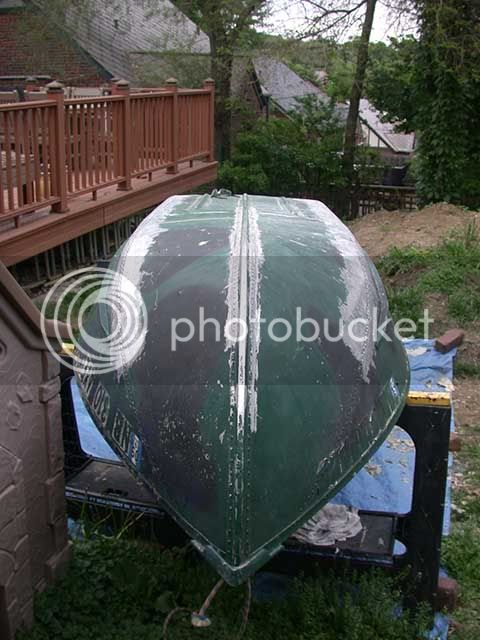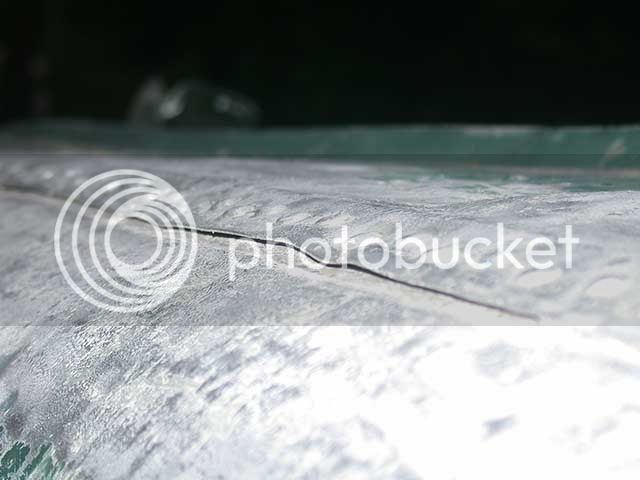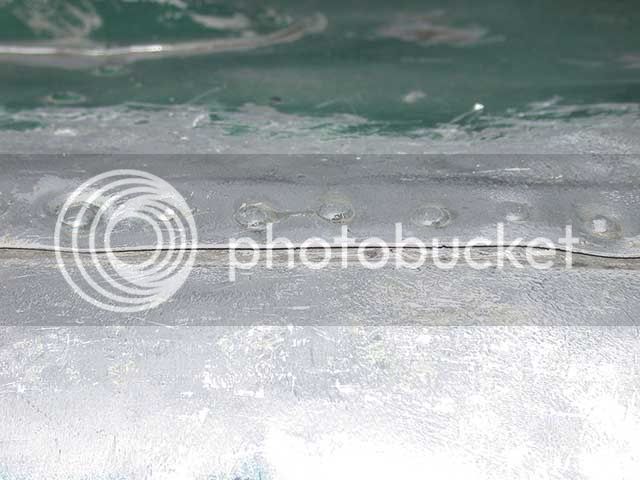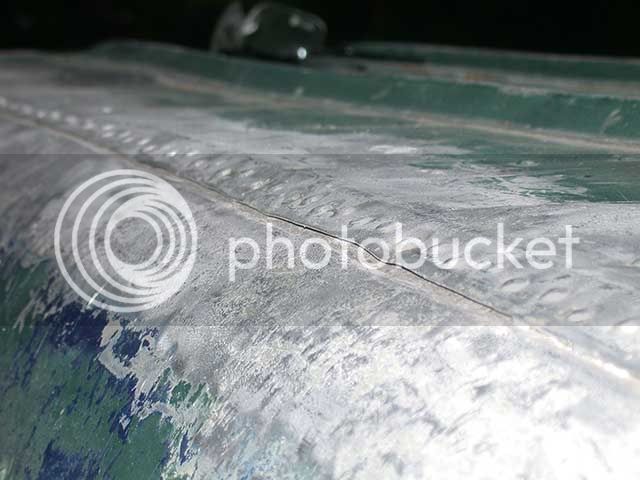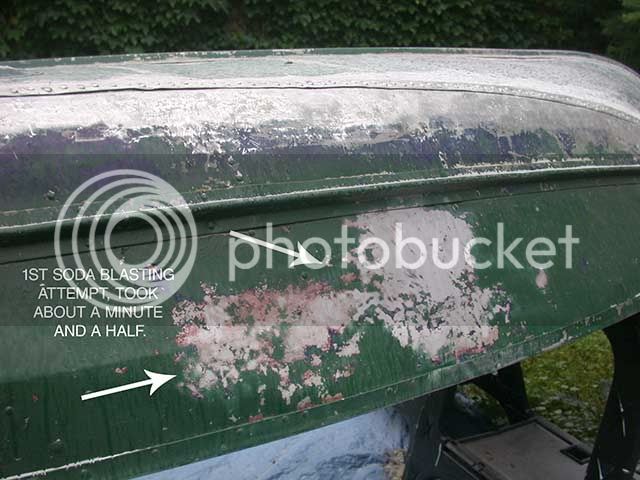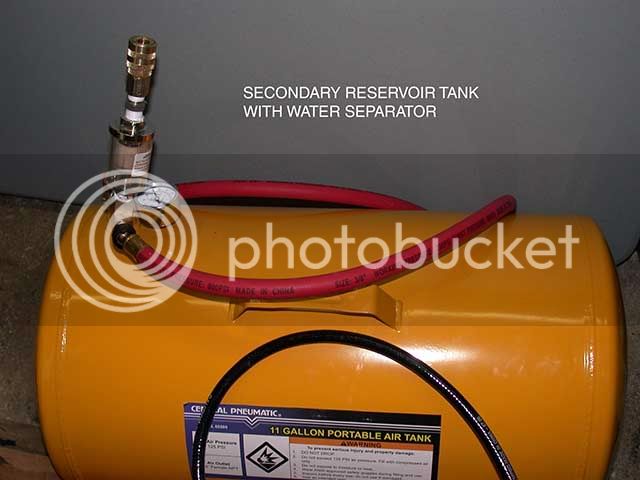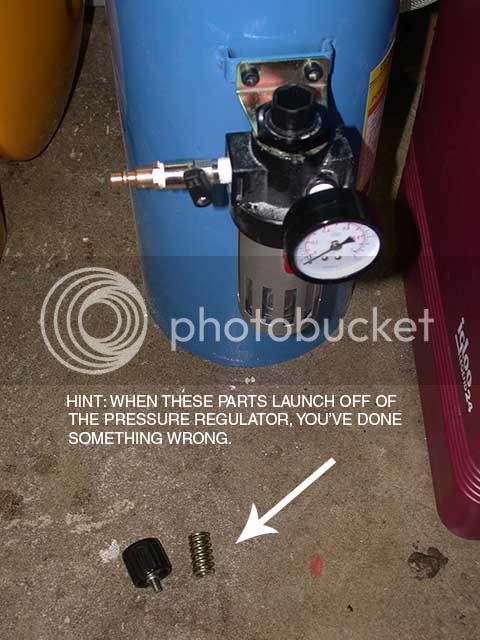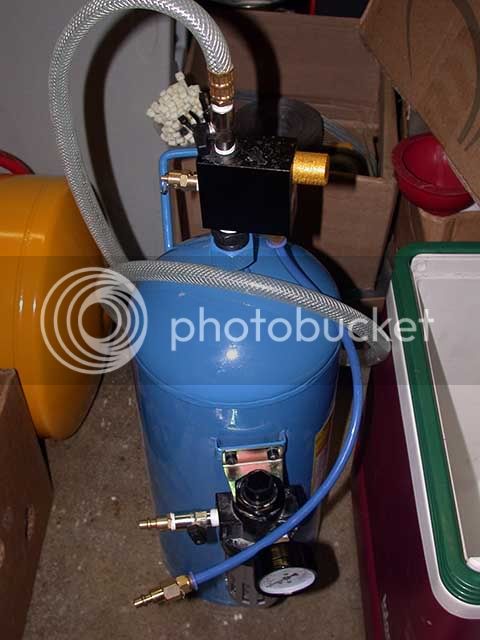Well, haven't made much progress since I last updated, as I've been very busy with work and family stuff. But last night I had a couple hours to try out the soda blaster I bought from Harbor Freight.
Got it loaded and hooked up to the air compressor. Right off the bat it seemed to work okay (the attached photo shows the amount I got done in about a minute and half... pretty quick work. However, my compressor doesn't have a very big tank, and it was having trouble keeping up with the air flow. So I ran and picked up an 11 gallon secondary tank, and connected it with a t-joint to hoping to get a little more air in reserve.
Then I noticed that the soda blaster tank was only at 75 psi, and it can take 100. So I started adjusting the small plastic knob that regulates air pressure in the tank, trying to get it higher. It didn't seem to have any effect, so I kept turning. Without warning, the knob shot off of the regulator, and a few little parts went flying. By this time it was getting dark, and I could only find the knob and a spring. Now it doesn't go back on the tank.
(and then it started raining on me and all the gear... just great)
Good old Harbor Freight... of course the instructions don't say anything about not turning this too far, or even show a diagram of what parts are supposed to be in that assembly. So at this point, I'm thinking about bypassing the flow regulator unit altogether. I have an output gauge on my compressor, and a second pressure gauge on my reserve tank, so I'm not worried about going over the 100psi max. There's a water separator unit on there too, but I installed one at the output of the reserve tank. I'm thinking I'll put in a new line that goes directly into the tank at the top (which will also allow me to replace the crappy blue plastic tubing that ran between the regulator and the tank input, which leaks like crazy).
I wonder why I didn't just scrape the loose paint off and paint over top of it? Oh yeah, because I have to make everything I do as complicated as possible, heh.


